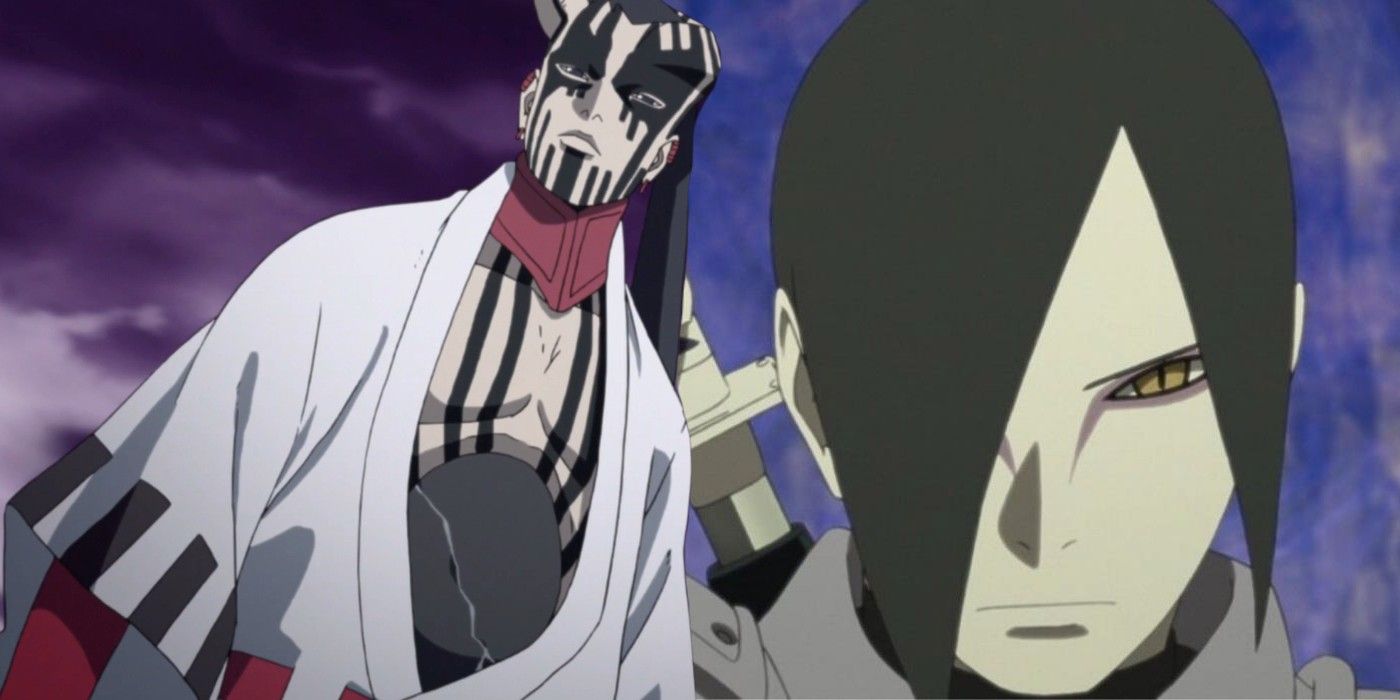Warning: contains spoilers for Boruto: Naruto Next Generations
In Naruto, Orochimaru loses his immortality through the Cursed Seal of Heaven, and Boruto just repeated that defeat in a much more brutal way with its latest villain, Jigen.
In Naruto, one of Orochimaru’s attempts at living forever requires him to brand shinobi with his Cursed Seal of Heaven, which slowly corrodes the mind of those afflicted so he can later possess their body. The villain chooses Anko as his first prospective vessel. When Orochimaru loses consciousness, Sasuke attempts to revive him by using the Evil Releasing Method on Anko’s branded seal. The problem, however, is that having the Cursed Seal of Heaven serves as the medium to revive Orochimaru removes Anko’s brand. Although Orochimaru is revived, he loses Anko as a potential vessel should he ever die.
In Boruto, Isshiki is able to reincarnate through vessels so long as he is able to successfully move his self-augmenting Karma mark onto other individuals. Isshiki succeeds with the monk Jigen and later finds a more suitable vessel in the boy Kawaki. When later battling Koji, Isshiki, who now refers to himself as Jigen, gets consumed by a wall of flames that he cannot consume because they’re void of chakra and cannot shrink because he already depleted his chakra. When Jigen’s body incinerates, Isshiki’s karma automatically attempts to resurrect in Kawaki, but since Kawaki’s Karma has yet to extract all of Isshiki’s data, Isshiki is forced to resurrect in Isshiki’s true form. But whenever an Ohtsutsuki like Isshiki reincarnates, all other Karma markings on their other vessels vanish.
Both Jigen and Orochimaru lose their respective ability to reincarnate when the catalyst is used to revive them incorrectly. For Jigen, the process that causes him to resurrect initiates immediately upon the destruction of his current vessel by looking for another body that possesses his Karma. But since no other vessel is ready when Jigen’s body burns, he resurrects in his true form and loses all other vessels. This is quite unfortunate for Isshiki because if he dies before he can pass on his Karma mark to someone else, then he is dead for good. For Orochimaru, Sasuke realizes that he can revive the villain by performing the Evil Releasing Method on Anko’s Cursed Seal of Heaven. This might revive Orochimaru, but the aforementioned method, in turn, frees Anko of the brand, making it impossible for Orochimaru to use her body as a vessel should he die.
Jigen and Orochimaru each sought immortality through the use of either seals or facial markings to convert people’s bodies into their vessels. Both villains also lose their respective catalysts that allowed them to reincarnate once these gateways are used to revive them in a way they never intended and that prove to be quite detrimental, but due to extraneous circumstances, were forced on them. Orochimaru’s is physically removed and Jigen resurrects too early before his other vessel is ready. Of course, Jigen’s failure in Boruto culminates in a much more brutal manner as he burns to death while in Naruto, Orochimaru just loses access to Anko’s seal. Of course, Itachi physically removes Sasuke’s own Cursed Seal of Heaven with the Sword of Totsuka, but it doesn’t involve reviving Orochimaru and isn’t nearly as brutal as burning alive.
